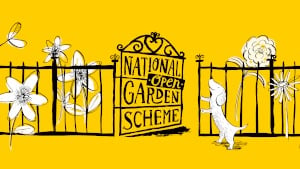About Arundel Castle & Gardens
Welcome to Arundel Castle & The Collector Earl’s Garden
Set high on a hill in West Sussex, this great castle commands the landscape with magnificent views across the South Downs and the River Arun. Built at the end of the 11th Century, it has been the family home of the Dukes of Norfolk and their ancestors for over 900 years. The original castle was founded on Christmas Day 1067 by Roger de Montgomery, Earl of Arundel, one of William the Conqueror’s most loyal barons. He was awarded a third of Sussex with the stipulation that a new castle be built near the mouth of the Arun to protect the approaches to Sussex from attack. Arundel Castle is one of the longest inhabited country houses in England. Many of the original features such as the crenellated Norman keep, gatehouse and barbican and the lower part of Bevis Tower survive. Between the 1870s and 1890s the house was almost completely rebuilt and the magnificent architecture in Gothic style is considered to be one of the great works of Victorian England.
Stroll through the grounds where you will discover different themed gardens; the rose garden planted in contemporary style; the Chapel garden with white and cool coloured plants; the cutting garden with tender perennials and rare plants; the renovated Victorian peach house and vinery where exotic fruits and vegetables are cultivated. The Gardens and grounds are planted sympathetically, and managed with an organic eco-friendly ethos to encourage wild flowers, beneficial insects and wildlife.
The Collector Earl’s Garden
This new formal garden is a light-hearted tribute to Thomas Howard, 14th Earl of Arundel (1585 – 1646), known as ‘The Collector’. It has been designed by Isabel and Julian Bannerman with Russell Taylor as job architect, and has been conceived as a Jacobean formal garden. It is in fact an imaginative re-creation of what the ‘Collector’ Earl’s formal garden may have been like at Arundel House, his town palace overlooking the Thames in London. The domed pergola and fountains are based on those seen in the garden vista in the background of the famous Mytens portrait of the Countess of Arundel (in the drawing room here), while the various gateways and pavilions are based on Inigo Jones’s designs for Arundel House. The grand centrepiece is the rockwork ‘mountain’ planted with palms and unusual ferns to represent another world, supporting a green oak version of ‘Oberon’s Palace’, a fantastic spectacle designed by Inigo Jones for Prince Henry’s Masque on New Year’s Day 1611, flanked by two green oak obelisks. This contains a shell-lined interior with a stalagmite fountain and gilded coronet ‘dancing’ on a jet of water. The garden is divided into formal courts with a centre canal pond, tufa-lined cascade and wild flower labyrinth. The planting is restrained with scented magnolia grandiflora, Indian Bean Trees, shrubs and semitropical plants taking advantage of the walls to trap heat.
Contemplate in the 14th Century Fitzalan Chapel, burial place of the Dukes of Norfolk and their ancestors.
Ascend to the top of the Norman Motte and Keep that overlook some of the most beautiful downland in England and out to sea. Discover the rich history of The Dukes of Norfolk, the Earls of Arundel and Surrey and the Castle from our friendly and informative guides.
Enjoy the grandeur of the finely preserved interior with its fascinating furniture, tapestries and rare collection of paintings by renowned artists including Van Dyck, Gainsborough and Canaletto.
The Private Chapel inside the castle is one of the most perfect monuments of 19th Century Catholic revival in England. Admire the exquisite craftsmanship evident throughout the Castle, typified by the rich mahogany panelling and vaulting that has marked out the Library as one of the finest Regency interiors in the world.
We offer a full range of refreshments to tempt and delight our visitors including a selection of hot and cold beverages, light lunches and cakes.
Disabled access – please visit our website for details.
.
Website:
https://www.arundelcastle.org
.jpg)
.jpg)
.jpg)
.jpg)
.jpg)
.jpg)
.jpg)
.jpg)
.jpg)
.jpg)


.jpg)

.jpg)
.jpg)
.jpg)
.jpg)